- Contents
Solving Social Issues That Fujitsu Can’t Solve Alone
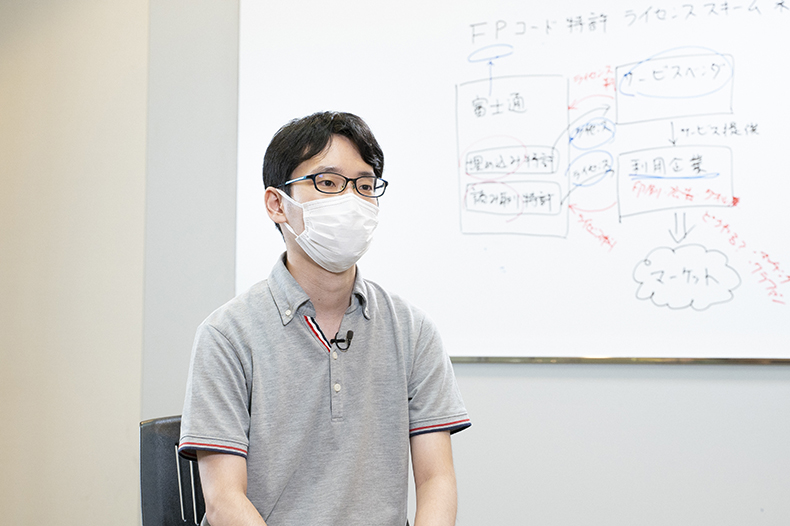 Yugo Taguchi, IP Strategy Office, Fujitsu
Yugo Taguchi, IP Strategy Office, Fujitsu
――Intellectual property (IP) is generally seen as a collection of assets that companies use for their sole benefit. Despite this image, what led Fujitsu to open up its IP to other companies?
Taguchi: By allowing companies other than Fujitsu to use our IP, we can derive more value from those assets. Sometimes, this can also lead to solving social issues that Fujitsu wouldn't be able to tackle alone, such as combating COVID-19 and supporting environmental conservation. To achieve these goals, we have started to proactively participate in matchmaking events hosted by national and local governments, financial organizations, and universities. We have also started to make some of our IP available to other companies.
――When did you start this endeavor?
Taguchi: It began in 2004 as an initiative for open innovation, and our first licensing case was in 2007 with a company in Kawasaki City, Kanagawa Prefecture. Since then, this initiative has expanded nationwide, and we now have cases in a variety of places in Japan.
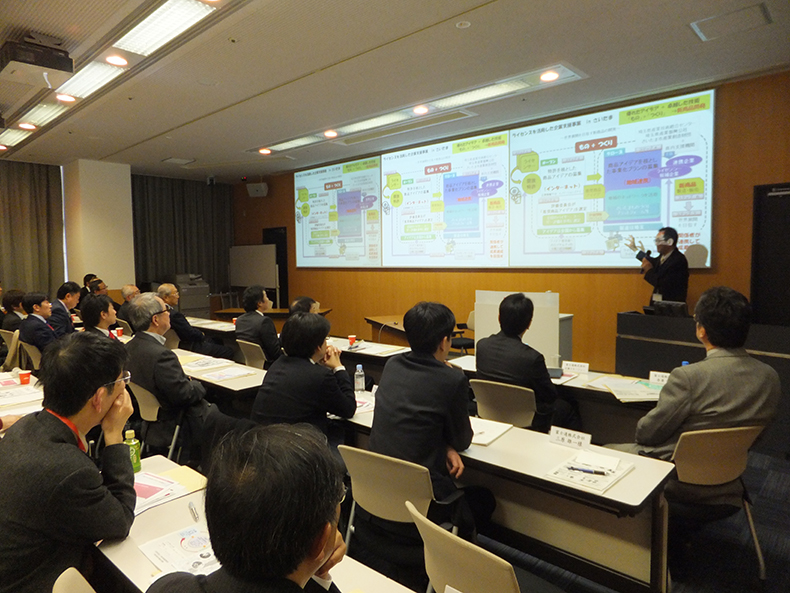 An IP Matching Program at Kawasaki Shinkin Bank (January 2014)
An IP Matching Program at Kawasaki Shinkin Bank (January 2014)
Taguchi: Furthermore, our global company aims to contribute to global environmental conservation in order to realize the SDGs. As part of that goal, since 2017, we have been participating in WIPO GREEN, a platform promoting the use of environmental technology that is operated by the World Intellectual Property Organization (WIPO). Some companies are already using Fujitsu's green technology to develop products and services that benefit the environment.
――I see that Fujitsu is participating in a wide range of projects both at home and abroad. What kind of IP has Fujitsu made available?
Taguchi: Fujitsu has approximately 40,000 IP assets obtained while developing technology in various fields such as AI, IoT, and supercomputers. Of those, we license out patents that aren't central to our business. Our licensable patents include smartphone apps, human vital sign sensing technology, material manufacturing technology, processing technology, and other patents that are easily applicable for practical use. As an example, UTIC, a Fukui Prefecture-based company in the dyeing and finishing industry, developed an insect repellent bracelet using our IP.
 BUG GUARD, an insect repellent bracelet developed by UTIC & Co., Ltd.
BUG GUARD, an insect repellent bracelet developed by UTIC & Co., Ltd.
――A Fujitsu patent was used to create an insect repellent bracelet? That's surprising.
Yes, it is. This product uses fragrance-emitting technology developed by Fujitsu in which a user can put a few drops of their favorite aroma oil onto a ceramic chip to diffuse a faint fragrance from the product. The technology was originally used in feature phones, but it was employed in the BUG GUARD product to repel insects by adding a few drops of insect repellent oil onto the chip. The product repels insects without having to spray insect repellant on the users' clothes and skin, making it safer to use for children and people with sensitive skin. We were very surprised at how they created new value from our patent with an idea that hadn't occurred to us.
Opening Up Intellectual Property for Free To Combat COVID-19
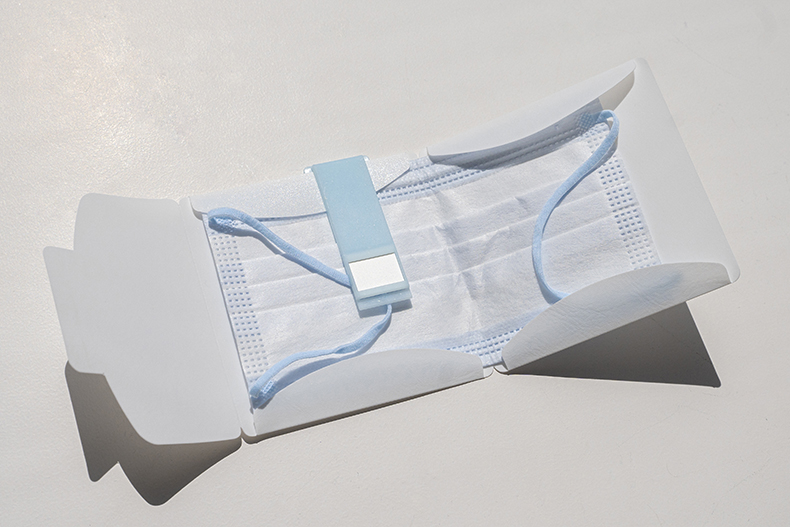
Other companies have taken a completely different approach when employing our fragrance-emitting technology and have created new products that we wouldn't have been able to invent on our own. Last year, to support the fight against COVID-19, Fujitsu announced that it would make its IP assets available free of charge. This initiative resulted in the development of a fragrance clip for face masks by Matsumoto Seisakusho Co., Ltd., a company which has been engaged in plastic processing, molding, and mold design for 50 years in Kawasaki City, Kanagawa Prefecture. We spoke to the representative director, Hirohide Matsumoto.
――What made you decide to use Fujitsu's IP?
Matsumoto: At the Intellectual Property Matching Program in Kawasaki City that we joined in 2012, we were introduced to Fujitsu’s aroma-diffusing technology. Using this technology, we teamed up with a group of students from Senshu University to come up with and develop Aroma LesFreres, a portable fragrance card that lets users carry their favorite scents with them. A fragrance clip for face masks is the second portable fragrance product that we developed.
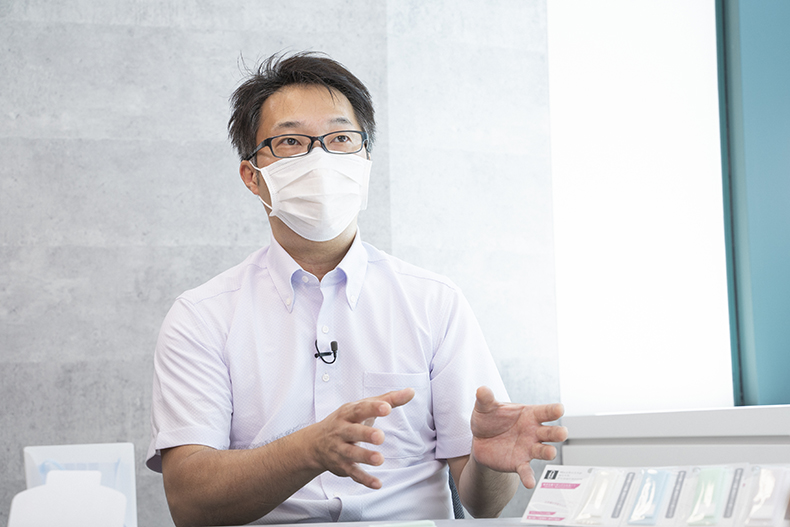 Hirohide Matsumoto, Representative Director, Matsumoto Seisakusho Co., Ltd.
Hirohide Matsumoto, Representative Director, Matsumoto Seisakusho Co., Ltd.
――What are the features of this product?
Matsumoto: Embedded in the clip is a ceramic chip featuring aroma-diffusing technology. You can diffuse a pleasant scent on a face mask by applying perfume or aroma oil onto the chip and attaching the clip to the face mask. The clip also incorporates titanium apatite, a photocatalyst with antibacterial and antiviral effects that was jointly developed by Fujitsu and Tokyo University.
――So, the combination of the two patented technologies makes it more effective against COVID-19.
Matsumoto: When you wear a face mask for a long period of time, the inside becomes muggy and starts to smell bad, causing stress. This is a useful product for dealing with the stress of the COVID-19 pandemic, and the antibacterial properties make it safe to reuse. We currently can't meet our friends and loved ones in person as easily as before, so I hope that wearing the same scent together will give users a sense of solidarity and comfort. I've also heard that a friend with a small child has been using the item as an insect repellent by applying a few drops of eucalyptus oil, which insects dislike, and hanging the clip on her child's stroller.
 Left: There are four types of clips. Right: Apply a few drops of aroma oil or perfume onto the built-in chip and clip it onto a face mask. The scent will last for 3 to 7 days if the face mask is kept in a mask case
Left: There are four types of clips. Right: Apply a few drops of aroma oil or perfume onto the built-in chip and clip it onto a face mask. The scent will last for 3 to 7 days if the face mask is kept in a mask case
――Based on your experience creating these two new products, what advice about collaboration would you give to companies considering utilizing other companies' IP?
Matsumoto: When we first participated in the Intellectual Property Matching Program, we went in with no plans. We came up with the idea of a portable fragrance clip based on cigarette cases. Even if you can't come up with any ideas beforehand, companies interested in co-creation should participate in as many matching programs as you can. Once you're there, if you pursue an idea that inspires you, combine the technologies each company specializes in, and really think it through, that will become the catalyst for creating a new product or service.
Creating Useful Products Using Licensable Patents
Similarly, Taira Co., Ltd., a company that manufactures packing and insulation material in Saitama Prefecture, created FLAROMA scented flashcards that also utilize Fujitsu's aroma-diffusing technology.
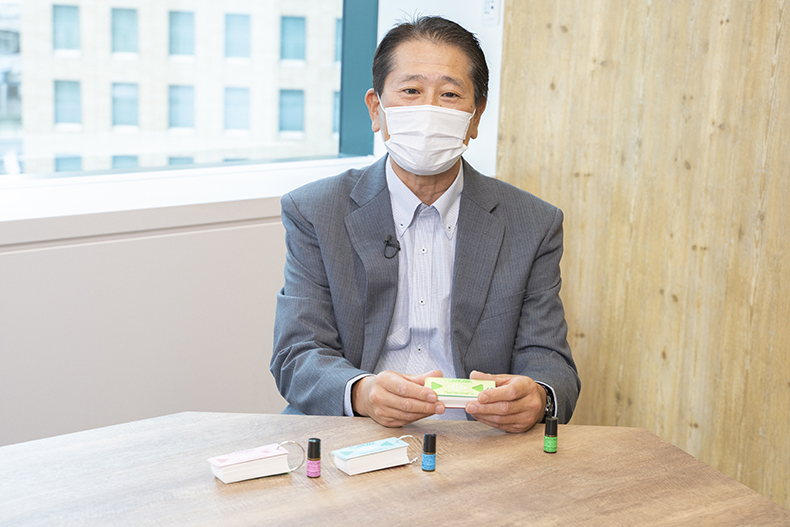 Taira Co., Ltd. Representative Director Jun Tateishi, who developed FLAROMA
Taira Co., Ltd. Representative Director Jun Tateishi, who developed FLAROMA
――What led you to use a licensable patent from Fujitsu to develop a new product?
Tateishi: We went to go see a presentation on ideas using licensable patents that was part of the Saishin Collab Sangakukan (Industry-Academia-Government) project by the Saitamaken Shinkin Bank. The winning idea was for a scented flashcard product that was conceptualized by a team from Saitama University. They asked us whether our company would be able to turn their concept into a product, and we immediately agreed.
――Could you describe FLAROMA?
Tateishi: It's a set of ring-bound flashcards with a urethane chip embedded into the cover. When you put some aroma oil onto the chip, it diffuses a faint fragrance. The embedded chip that diffuses the fragrance is the part that uses Fujitsu's aroma-diffusing technology. The product uses the strong connection between scent and memory to improve our memorization skills. It comes with three aroma oil blends: Relax, Refresh, and Concentration.
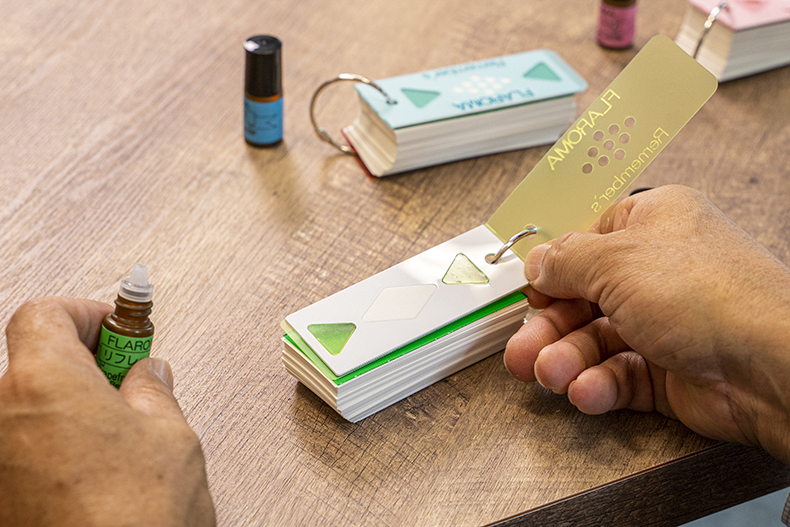 The part holding the chip can open and close, and the chip can be swapped out. This design, which was developed for this product, is gaining attention from the Japan Patent Office as a novel technology that builds upon existing patented technology. Taira Co., Ltd. is currently applying for a patent for this innovation.
The part holding the chip can open and close, and the chip can be swapped out. This design, which was developed for this product, is gaining attention from the Japan Patent Office as a novel technology that builds upon existing patented technology. Taira Co., Ltd. is currently applying for a patent for this innovation.
These aroma oils are 100% natural essential oils. We couldn't make the oils by ourselves, so we made dozens of different prototype blends with the help of cosmetics manufacturers and aromatherapists It took half a year to finish creating our three original blends.
――If it's natural, it'll be safe to use. This product will make studying more enjoyable for students that aren't good at memorization.
Tateishi: Yes. Since the product was made and collaboration with industry, academia, government, and finance, we received a large number of inquiries from TV stations and newspaper publishers when it was released. Surprisingly, it has also been well received by elderly people who enjoy writing haiku and senryu poems. As a manufacturing company, our mission is to create useful products. It is thanks to Fujitsu's licensable patent project that we were able to accomplish that in the form of creating an original product, which had been a dream of ours for many years.
――In Part 2, we will introduce Fujitsu's IP utilization projects for disaster recovery assistance and collaboration with a university, as well as the thoughts behind Fujitsu’s endeavors to open up intellectual property.
Related Articles
From the Editorial Department
Recently, Fujitsu unveiled its new business brand, Fujitsu Uvance, as part of its ongoing efforts to realize its purpose— “to make the world more sustainable by building trust in society through innovation.” The company also announced that it would strongly promote business activities focused on resolving social issues to realize a sustainable world. “Uvance” is a portmanteau of the words “universal” and “advance,” and embodies the concept of making all (universal) things move forward (advance) in a sustainable direction. It demonstrates Fujitsu’s commitment towards “building new possibilities by connecting people, technology and ideas, creating a more sustainable world where anyone can advance their dreams.” The brand name was selected through a global employee poll.
Under the Fujitsu Uvance brand, we aim to achieve and balance both business transformation and the realization of a sustainable society.



